Impacts of COVID-19 on alcohol and other drug use
On this page:
In mid-March 2020, a range of measures were introduced in Australia to limit the spread of COVID-19 (DoH 2020a). These measures were extended in late March 2020 with all non-essential services ordered by the Australian Government to temporarily close. This included licensed liquor outlets such as pubs and clubs, excluding bottle shops attached to these venues (DoH 2020b).
As a result of these measures, it was expected that variations in sales and consumption of alcohol, drinking patterns, and illicit drug use will have an impact on the Australian population (ADF 2020; Dietze & Peacock 2020).
Throughout the multiple waves of the pandemic, restrictions were implemented and eased sporadically across jurisdictions.
There have been 4 main waves of COVID-19 in Australia:
- Wave 1 – March/April 2020, the beginning of the pandemic, cases were reported in all states and territories
- Wave 2 – June/July of 2020 with the majority of cases reported in Victoria
- Wave 3 – June/July of 2021 mainly impacting New South Wales, the Australian Capital Territory and Victoria, lasting until the end of October 2021
- Wave 4 – December 2021 following the introduction of the Omicron variant affecting all states and territories.
Data sources presented here are not directly comparable, and care should be taken when interpreting data; see the Data Quality statement on each source for further information on collection time periods, sample selection and methods.
View the Alcohol and other drugs during COVID-19 fact sheet >
Purchase and consumption of alcohol
During the initial stages of the pandemic, Commonwealth Bank of Australia (CBA) card spend data showed an initial increase in spending on alcohol in March 2020, which may have been driven by stockpiling in response to concerns that bottle shops may close with the introduction of tighter restrictions. This pattern reversed in April 2020 (G Aird 2020, pers. comm.,14 May).
Throughout the period May 2020 to early February 2021, CBA card spending on alcohol goods (such as bottle shops) continued to be higher when compared to the equivalent period in the previous year while there was a decline in spending on alcohol services (such as pubs and clubs). This decline in spending on alcohol services (such as pubs and clubs) was reversed in mid-November 2020 for the first time since COVID-19 restrictions were introduced (CBA 2020).
There are several caveats to note when interpreting the CBA card spending data; refer to section Data quality: Commonwealth Bank of Australia, CBA Card Spend.
The increase in spending on liquor retailing is further supported by ABS Retail Trade, Australia data. Retail turnover data includes retail sales and online sales and does not include spending on alcohol services, such as spending in pubs and clubs. For more information, see the Data quality ABS Retail Trade, Australia.
Strong increases in liquor retailing turnover were reported in all months of 2020, when compared to 2019. Specifically, liquor spending:
- increased between March 2019 ($999.3b) to March 2020 ($1,318.7b)
- increased between the 2020 calendar year ($12,334.1b) to the 2021 calendar year ($15,625.2b) (ABS 2022).
The National Wastewater Drug Monitoring Program (NWDMP) measures the presence of substances in over 58 sewerage treatment plants across Australia. Reports 11 to 18 of the program covered the period from December 2019 to August 2022 for both regional and capital city sites (ACIC 2023).
Report 17 of the NWDMP found that alcohol consumption has remained relatively stable over time (ACIC 2022c). However, the introduction of national COVID-19 restrictions in March 2020 had a notable effect on alcohol consumption with an initial slump in consumption reported in April 2020. The usual increase in weekend consumption became less common as pubs, clubs and restaurants who serve alcohol either closed or had restricted customer numbers. Once restrictions were eased in June 2020, several jurisdictions showed a rebound in alcohol consumption, with weekend use once again markedly higher than weekday use (Report 13 ACIC 2021).
The results from several self-reported surveys have produced mixed findings with regard to the impact of COVID-19 on the consumption of alcohol and other drugs. Refer to the Data Quality section for information about these self-reported surveys.
The ABS Household Impacts of COVID-19 Survey collected information from approximately 1,000 people fortnightly throughout Australia. Wave 3 of the survey (reference period 29 April to 4 May 2020) included a question about changes in alcohol consumption in the previous 4 weeks due to COVID-19.
- Nearly half (47.1%) of participants said their consumption of alcohol stayed the same, and 28.9% reported that they do not usually consume alcohol.
- 14.4% reported an increase – a higher proportion of females (18%) than males (10.8%) reported increased alcohol consumption.
- 9.5% reported a decrease (ABS 2020a).
Wave 7 of the survey (reference period 24 to 29 June 2020) included a question about consumption of alcohol in the last 2 weeks compared to usual consumption before March 2020 (ABS 2020b). Notably, participants who reported that they did not usually consume alcohol were included in Wave 3 (April to May 2020) but excluded from analysis in Wave 7 (June 2020). However, results were broadly similar across both waves. Of those people who usually consume alcohol:
- most people reported that their alcohol consumption stayed at the same level (71.5%) compared to before March 2020
- 13.9% reported drinking more – females (15.9%) remained more likely than males (12.1%) to report increased alcohol consumption
- 14.7% reported a decreased compared to before March 2020 (ABS 2020b).
Figure COVID1: Alcohol use in May to June 2020 compared to before COVID-19

In May 2020, 1 in 5 people reported increased alcohol use since the spread of COVID-19.

The most common reasons for increased alcohol use included spending more time at home, boredom and increased stress.
Females were more likely than males to report increased alcohol use during COVID-19 across multiple surveys conducted in May and June 2020.
Source: AIHW, adapted from Biddle et al. 2020a, ABS 2020a and ABS 2020b.
The 34th ANUpoll (reference period 12-24 May 2020) collected information during the early stages of the pandemic, from 3,219 respondents aged 18 years and over across Australia. Respondents were asked several specific questions related to changes in alcohol consumption during COVID-19 and about their consumption of tobacco and illicit drugs (Biddle et al. 2020a).
With regard to changes in alcohol consumption, of those who reported that they drank at all (excluding those who said they never drink alcohol):
- 27% of respondents reported that their alcohol consumption decreased since the spread of COVID-19 in Australia
- 20% reported an increase in alcohol consumption.
Of all respondents (including those who said that they never drink alcohol):
- A higher proportion of females reported that their alcohol consumption had increased (18.1% compared with 15.5% for males). Note: those who said that they never drink alcohol were included in this analysis as not having changed their alcohol consumption.
- The most common reason given for increased alcohol consumption was that the person is spending more time at home (67% for males and 64% for females). The next most common response for males was ‘Boredom, nothing else to do’ (49%) while for females it was ‘Increased stress’ (42%). Note: respondents were able to nominate more than one reason (Biddle et al. 2020a).
The Australians' Drug Use: Adapting to Pandemic Threats (ADAPT) study asked Australians who had used illicit drugs at least once a month in 2019 about their alcohol and other drug use during COVID-19 restrictions compared to before March 2020. Preliminary findings relate to the 197 participants who completed all surveys from Waves 1 to 4.
- Wave 1 (reference period 29 April 2020 to 15 June 2020), Wave 2 (29 June 2020 to 22 September 2020) and Wave 3 (29 October 2020 to 13 January 2021) show the proportion of participants who perceived their use had increased when compared to before March 2020 was highest among those who consumed alcohol or cannabis.
- In Wave 4 (reference period 29 April 2021 to 20 July 2021), 38% of participants reported a decrease in their perceived alcohol use in the past 4 weeks. This was the highest since the study began and the first time perceived decrease was higher than those who reported an increase in consumption (Baillie et al. 2021).
Smoking
The ABS Household Impacts of COVID-19 Survey (reference periods 29 April-4 May 2020 and 24-29 June 2020) asked Australians aged 18 and over about personal stressors experienced in the previous 4 weeks due to COVID-19. In May 2020, 1.4% of respondents reported problems with smoking, while 1.7% reported problems with smoking in June 2020 (ABS 2020a, Table 7.1). This increased to 3.5% of respondents reporting problems with smoking in October 2020 (ABS 2020b, Table 3.1).
The January 2021 ABS Household Impacts of COVID-19 Survey (reference period 18-31 January 2021) asked about strategies to manage physical and mental health during the COVID-19 pandemic. Since 1 March 2020, 1.2% of respondents reported quitting or reducing smoking to manage their physical health (ABS 2021, Table 4.1).
Respondents in the 34th ANUpoll (reference period 12-24 May 2020) were asked how often, if at all, they currently smoked tobacco. There was little change in the proportion of current smokers in the May 2020 sample – 11.8% were current smokers compared with 12.2% who were current smokers when they were recruited to the panel (Biddle et al. 2020a).
Illicit drugs
The NWDMP measures the presence of selected illicit drugs in sewerage treatment plants across Australia. Wastewater analysis indicated initial COVID-19 restrictions did not immediately interrupt the drug markets in Australia due to existing supplies being consumed.
The NWDMP report 15 indicates COVID-19 related restrictions have not impacted drug markets uniformly, with differences across drugs and both between and within jurisdictions (ACIC 2022a).
NWDMP report 17 shows most drug markets are returning to pre-COVID-19 levels. Fluctuations in consumption during the current reporting period can be explained by factors that routinely impact illicit drug markets (ACIC 2022c).
Between 2019–20 and 2020–21 the methylamphetamine and MDMA markets were most impacted. Consumption of:
- methylamphetamine decreased by 21%
- MDMA decreased by 53%
- cocaine decreased 17%; this decrease followed annual increases of cocaine consumption for the first 4 years of the Program (2016–17 to 2019–20)
- between 2019–20 and 2020–21, heroin decreased by 4%.
Report 15 of the NWDMP indicates cannabis was the only illicit drug market relatively unaffected by COVID-19 restrictions in 2020–21. The cannabis market is almost exclusively supplied via domestic production, unlike other major illicit drug markets (ACIC 2022a).
Report 16 of the NWDMP covers the collection period August to December 2021, and found the illicit stimulant markets showed early signs of an increase in consumption, although still below the levels experienced prior to COVID-19. Changes in the market for illicit stimulants have been mainly caused by COVID-19 restrictions. However, changes are subject to different environmental influences (ACIC 2022b).
The ADAPT study asked Australians who had used illicit drugs at least once a month in 2019 about their alcohol and other drug use during COVID-19 restrictions compared to before March 2020. Preliminary findings relate to the 197 participants who completed all surveys from Waves 1 to 4.
- Cannabis had the highest perceived changes in consumption across Wave 1 (reference period 29 April 2020 to 15 June 2020), Wave 2 (29 June 2020 to 22 September 2020) and Wave 3 (29 October 2020 to 13 January 2021), and the third highest in Wave 4 (reference period 29 April 2021 to 20 July 2021):
- Wave 1 – 56% increased consumption; 12% decreased
- Wave 2 – 46% increased consumption; 18% decreased
- Wave 3 – 30% increased consumption and 33% decreased
- Wave 4 – 33% increased consumption and 35% decreased.
- Meth/amphetamine and ketamine were the only drugs where perceived increased consumption was consistently higher than perceived decreased consumption (Baillie et al. 2021).
Figure COVID2: Change in alcohol or illicit drug use during COVID-19 among people aged 18 and over who use illicit drugs at least monthly, by drug type (percent)
This figure shows that, at Wave 1 (29 April–15 June 2020), over 2 in 5 (45%) people increased their alcohol use. This declined to 35% at Wave 2, 34% at Wave 3 and 28% at Wave 4 (29 June–22 September 2020, 29 October 2020–13 January 2021 and 29 April 2020–20 July 2021 respectively). By contrast, the proportion of people who reported stable use steadily increased from 25% at Wave 1 to 37% at Wave 3 before decreasing slightly to 34% at Wave 4. Around 1 in 3 people (29%–33%) reported a decrease in alcohol use in Waves 1–3 before increasing to 38% in Wave 4. Other drug types can be selected via a drop-down menu.

The 34th ANUpoll (reference period 12-24 May 2020) collected information about participants consumption of illicit drugs. For those who consume illicit substances:
- 25.7% reported their consumption had decreased
- 17.6% reported their consumption had increased (Biddle et al. 2020a).
Physical and mental health treatment
Access to alcohol, drug and mental health services
The Australian Government announced in April 2020 that an additional $6 million would be allocated to online and phone support services for people experiencing drug and alcohol problems (Hunt 2020).
Analysis of the Alcohol and other drug treatment services (AODTS) National Minimum Data Set observed changes as services adapted to public health regulations, particularly treatment services involving groups of people or those requiring tailored physical settings:
- Decreases in rehabilitation treatment episodes in April to June 2020 continued to June 2022 due to public health restrictions reducing availability of treatment places.
- Increases in counselling between April and December 2020 were followed by declines to June 2022.
- Nationally, alcohol and other drug (AOD) treatment services showed a drop across most main treatment types between April and June 2020, this was followed by increases in subsequent quarters before decreasing again in waves 3 and 4 (April to December 2021) (AIHW 2023).
- Major cities and Inner regional areas reported more changes in treatment episodes for rehabilitation and counselling than other areas.
Data from the 34th ANUPoll showed there was a high level of unmet need for drug and alcohol counselling early in the COVID-19 pandemic. The rate of unmet need includes people who needed a service, but did not seek help, and those who reported difficulty in accessing services.
In May 2020, 0.5% of Australians aged 18 and over said they needed drug or alcohol counselling in the last 2 months. Of these, just under 2 in 5 (39.4%) people sought help (Biddle & Gray 2020b).
A total of 78,360 Australians reported they needed drug or alcohol counselling and either did not seek support or experienced significant barriers to treatment. Barriers included cost and not knowing who to contact (Biddle & Gray 2020b).
Figure COVID3: Alcohol, drug and mental health treatment during COVID-19
In May 2020, 78,400 people said they needed alcohol or drug counselling but did not seek support or experienced treatment barriers.

Between April and July 2021, nearly 1 in 2 people who use illicit drugs had accessed mental health services in the past 4 weeks.

Drug treatment episodes provided by publicly funded AOD agencies declined between April and June 2020, then increased.
Source: AIHW, adapted from Biddle & Gray 2020b, Baillie et al. 2021 and AIHW 2022.
Data from the ADAPT study indicate that 6% of people who regularly use illicit drugs had accessed drug treatment across 4 surveys conducted from April 2020 to July 2021 (6% in Wave 3, 7% in Wave 2 and 4% at Wave 1). At Wave 4 (April to July 2021), 0.5% of respondents reported that they had tried to access drug treatment in the past 4 weeks but were unable to. This is compared to 2% at Waves 1 to 3 (Baillie et al. 2021).
The ADAPT study showed that 47% of participants had accessed mental health services in Wave 4 (reference period 29 April 2021 to 20 July 2021), while 7% had tried to access mental health services but were unable to. These proportions remained relatively stable over the 4 waves of the study (Baillie et al. 2021).
Strategies to manage physical and mental health
The January 2021 ABS Household Impacts of COVID-19 Survey (reference period 18 to 31 January 2021) asked Australians aged 18 and over to describe strategies they used to manage their physical and mental health during the COVID-19 pandemic (ABS 2021).
Physical health
To manage their physical health, since 1 March 2020 due to COVID-19:
- 5.9% of people said they had cut out or reduced alcohol
- 1.2% reported quitting or reducing smoking
- females (6.2%) were more likely than males (5.5%) to report cutting out or reducing alcohol consumption for their physical health (ABS 2021).
Mental health
To manage their mental health, since 1 March 2020 due to COVID-19:
- 3.2% of people reported using alcohol or drugs to manage their mental health
- 1.8% reported using prescription medicines
- 1.9% reported cutting out alcohol or drugs
- females (2.5%) were more likely than males (0.8%) to report using prescription medicines as a strategy for mental health (ABS 2021).
Vaccine acceptability
The COVID-19 vaccine acceptability among people in Australia who inject drugs: Update from the 2021 Illicit Drug Reporting System interviews collected data on vaccine intentions in June–July 2021, during the early stages of the vaccine rollout. People who inject drugs may experience a higher level of adverse health outcomes following COVID-19 infection due to higher rates of comorbidity and may also experience barriers in accessing health care such as economic disadvantage and stigma. The findings from this report showed a high level of vaccine hesitancy among people who inject drugs.
Unvaccinated participants were asked the question ‘do you intend to get vaccinated for COVID-19?’ and around 1 in 2 (48%) reported hesitancy to receive the vaccine. Among those who reported vaccine hesitancy:
- 22% responded ‘definitely not’
- 13% responded ‘probably not’
- 13% responded ‘not sure yet’.
The main reason for vaccine hesitancy was vaccine safety (41%) followed by vaccine side effects (35%) and perceived low risk of disease acquisition (17%). However, the change from an elimination approach to COVID-19, to maximising vaccine coverage may mean vaccine intentions have changed over time (Price et al. 2022).
Figure COVID4: COVID-19 vaccine hesitancy among people who inject drugs
People who inject drugs may experience higher levels of adverse health outcomes after COVID-19 infection as well as barriers to health care.
Between June and July 2021, around 1 in 2 people who inject drugs reported hesitancy to receive a COVID-19 vaccine.
Between June and July 2021, around 1 in 2 people who inject drugs reported hesitancy to receive a COVID-19 vaccine.

Common reasons for vaccine hesitancy included concerns about vaccine safety and side effects.
Source: AIHW, adapted from Price et al. 2022.
Drug-induced deaths
Analysis of drug-induced deaths in the early stages of the COVID-19 pandemic is included in the Trends in overdose and other drug-induced deaths in Australia, 2002–2021 report from the National Drug and Alcohol Research Centre (NDARC).
Mortality data are revised (2019) and preliminary (2020 and 2021) and are subject to revision as coronial investigations are finalised and additional deaths registrations are received, data should be used with caution.
In general, national quarterly rates of drug-induced deaths in 2020 and 2021 were similar or lower than rates reported in 2019. Significant differences were found in some quarterly comparisons, for example:
- Quarter 2 (April-June) 2019 compared with quarter 2 2021 reported a decrease from 1.9 deaths per 100,000 population (491 deaths) to 1.7 deaths per 100,000 (430 deaths).
- Quarter 3 (July to September) 2019 compared with quarter 3 2021 reported a decrease from 2.0 deaths per 100,000 population (510 deaths) to 1.6 deaths per 100,000 (416 deaths) (Chrzanowska et al. 2023).
Further information
This release includes data relating to COVID-19 since the beginning of the pandemic up to July 2022. For other data, information from this period, see our Topic: COVID-19.
ABS 2020a. Household Impacts of COVID-19 Survey, 24–29 June 2020, Accessed 27 July 2022.
ABS 2020b. Household Impacts of COVID-19 Survey, October 2020, Accessed 27 July 2022.
ABS 2021. Household Impacts of COVID-19 Survey, January 2021, Accessed 27 July 2022.
ABS 2022. Retail Trade, Australia, May 2022. Viewed 19 July 2022.
ACIC 2021. National Wastewater Drug Monitoring Program Report 13, Canberra: ACIC. Viewed 1 March 2021.
ACIC 2022a. National Wastewater Drug Monitoring Program Report 15, Canberra: ACIC. Viewed 18 March 2022.
ACIC 2022b. National Wastewater Drug Monitoring Program Report 16. Canberra: ACIC. Viewed 30 June 2022.
ACIC 2022c. National Wastewater Drug Monitoring Program Report 17. Canberra: ACIC, accessed 2 November 2022.
ACIC 2023. National Wastewater Drug Monitoring Program Report 18. Canberra: ACIC, accessed 21 March 2023.
ADF (Alcohol and Drug Foundation) 2020. How mass trauma affects alcohol use, Viewed 29 April 2020.
AIHW (Australian Institute of Health and Welfare) 2023, Alcohol and other drug treatment services in Australia annual report, AIHW, Australian Government, accessed 21 June 2023.
Baillie G, Peacock A, Hammoud M, Memedovic S, Barratt M, Bruno R et al. 2021. Key findings from the ‘Australians’ Drug Use: Adapting to Pandemic Threats (ADAPT)’ study Wave 4, ADAPT Bulletin no. 4. Sydney: National Drug and Alcohol Research Centre, UNSW.
Biddle N, Edwards B, Gray M & Sollis K 2020a. Alcohol consumption during the COVID-19 period: May 2020, ANU Centre for Social Research and Methods: Canberra. Viewed 10 June 2020.
Biddle N & Gray M 2020b. Service usage and service gaps during the COVID-19 pandemic, ANU Centre for Social Research and Methods: Canberra. Viewed 29 March 2021.
CBA (Commonwealth Bank of Australia) 2020. Commonwealth Bank of Australia, Global Economic & Markets Research reports: CBA card spend, Viewed 6 November 2020.
Chrzanowska A, Man N, Akhurst J, Sutherland R, Degenhardt, L Peacock A 2023. Trends in overdose and other drug-induced deaths in Australia, 2002–2021. Sydney: National Drug and Alcohol Research Centre, UNSW Sydney, accessed 4 May 2023.
Dietze and Peacock 2020. Illicit drug use and harms in Australia in the context of COVID-19 and associated restrictions: Anticipated consequences and initial responses, Drug and Alcohol review, Volume 39, Issue 4. Viewed 23 May 2020.
DoH (Department of Health) 2020a. Australian Health Protection Principal Committee (AHPPC) coronavirus (COVID-19) statement on 18 March 2020, Canberra: DoH. Viewed 29 April 2020.
DoH 2020b. Australian Health Protection Principal Committee (AHPPC) coronavirus (COVID-19) statement on 22 March 2020, Canberra: DoH. Viewed 29 April 2020.
Hunt, the Hon. G 2020. Additional $6 million to support drug and alcohol services during COVID-19,Media release by Minister for Health. 24 April 2020. Canberra. Viewed 29 April 2020.
Price O, Dietze P, Maher L, Crawford S, Peacock A 2022. COVID-19 vaccine acceptability among people in Australia who inject drugs: Update from the 2021 Illicit Drug Reporting System interviews, Sydney: National Drug and Alcohol Research Centre, UNSW Sydney.


